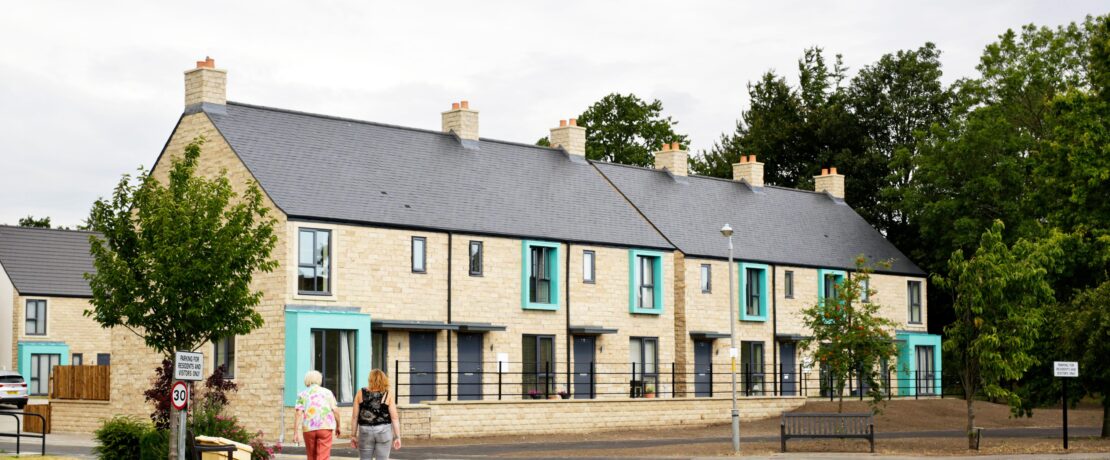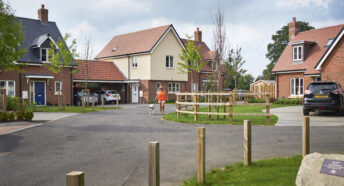CPRE’s jargon-busting guide to affordable housing policy
Launched as a companion to our 2023 report: ‘‘Unravelling a crisis: the state of rural affordable housing in England’’, this handy guide will help you understand a range of key housing terms and policy mechanisms.
Our 2023 affordable housing report laid bare the chronic shortage of affordable housing, leading to huge waiting lists. The issue is being fed by stagnating wages, rising house prices and an increase in short term lets and second homes. Read on to learn about some of the key terms and policies related to affordable housing.
Types of affordable housing
There is a lot of confusion around the term ‘affordable housing’ and what it actually means. Currently there are lots of different affordable housing tenures that can range from homes sold at 80% of the market sale value to lower cost rental properties.
Tenure
Tenure refers to the conditions or terms under which buildings (or land) are occupied. You’ll find some of the main affordable housing tenures available below, along with the associated level of affordability. There are other ‘affordable products’ available in addition, but these are some of the key options mentioned in our report.
Social Rent
Social Rent is set using a government formula that is calculated to take account of the relative value of the property, the size of the property and relative local income levels. Most social housing properties are let as social rent.
London Affordable Rent
Homes let out at London Affordable Rent (LAR) are for lower income households with rents capped at benchmark levels published by the Greater London Authority. LAR is significantly less than 80% of market rent set for other affordable rent housing.
Affordable Rent and/or Intermediate Rent
The government introduced ‘Affordable Rent’ in 2011. Affordable rents can be set at up to 80% of market rent (inclusive of service charges). Intermediate rent is also available at levels approximately 20% lower than the market rate (or 80% of market rates) and is primarily offered to lower income households in London and the South East.
London Living Rent
London Living Rent (LLR) was introduced to help middle income earners save for a deposit to purchase a house. Rents are less than market levels and capped but vary depending on the area. As LLR helps to get people on the housing ladder it can be classed as an affordable home ownership tenure.
Shared Ownership
Shared Ownership enables people who may not be able to afford to purchase outright the chance to buy a share of a property and pay rent on the remaining amount (plus service charges). Shares are usually between 25% and 75%. The purchaser then has the option to increase their share in the property (known as ‘staircasing’) up to 100%.
Discount Market Sale
Discount Market Sale is another lower cost home-ownership option for lower and middle income earners to buy a new build property at a discounted price. The discount varies depending on the property and sale price.
First Homes
First Homes are a type of discounted market sale housing offered at a minimum reduction of 30% against the market value (it can be more).
Read our affordable housing report
Other terms, phrases and policies
We have also used several other terms and phrases that people may be less familiar with. As such, we have set out some of them out below with their definitions to help with understanding the report.
National Model Design Guide
The National Model Design Guide provides advice to developers, council planning officers, politicians, and local communities on how to deliver high quality places through the planning system. It sets out what well designed places look like and how each different group can help champion high quality design in their area. It is not adopted policy and has no statutory (legal) power.
National Model Design Code
The National Model Design Code forms part of the National Planning Practice Guidance and provides detailed advice and criteria for local authorities to follow when developing design codes. A design code is a set of simple requirements for the development of a site or area. Codes can include parameters for building heights, land uses, the amount of green space required and many other physical characteristics of a place and help to make sure future developments are well designed.
Hope Value
In England, once a site has planning permission the value of that site, even undeveloped, goes up. The difference between the existing value (based on the current land-use) and the potential value of the land (based on the proposed land-use) is known as the ‘hope value’. I.e., monies ‘hoped’ can be secured for the land.
Land Acquisition
Land acquisition is the process of buying a piece of land (including buildings) with a view to developing the land for residential or commercial development.
Rural Housing Enabler
Rural Housing Enablers work with councils and communities to increase the supply of affordable housing in rural areas. They can provide independent expert advice and undertake surveys such as housing needs assessments to gain a better understanding of the type of new homes required in an area.
Rural Exception Site Policy
Rural Exception Sites are small sites in protected rural areas used for providing homes for people that live in the area. They would not usually be allowed planning permission; however, an exception is made for affordable housing.
Housing Waiting Lists
Waiting lists or registers are lists of people who qualify for social housing in a local authority area. Once on the register people can then bid for social housing.
Objectively Assessed Need
Local Planning Authorities are required to understand and report the objectively assessed housing need (OAN) for their area. This includes market and affordable housing based off an assessment of the quantity and make-up of current and future households. This assessment is usually provided in a document called a Strategic Housing Market Assessment or a Local Housing Needs Assessment.
Five Year Land Supply
Every Council in England is required by law to identify sites within their area that can be developed for housing. They must be able to demonstrate that the sites can deliver a minimum of 5 years of housing in line with the OAN.
Right to Buy
The right to buy allows Council tenants to buy their Council home at a discount.
Section 157 Exemptions
A Section 157 exemption prevents homes being sold through the right to buy if the house is in a national park, area of outstanding natural beauty or an area designated as ‘rural’.
Passivhaus
Passivhaus is a specific standard for measuring the energy efficiency of a building. Homes that meet Passivhaus standards are very energy efficient and well insulated and benefit from lower energy bills.
Short Term Let
A short-term let is a property that is rented out for a temporary period of up to 6 months.
Permitted Development Rights
Permitted development rights (PDR) allow landowners to make changes to an existing building or site without having to apply for planning permission.
Community Land Trusts
Community land trusts (CLTs) are non-profit organisations that own and manage land for the benefit of the community. This can include delivering affordable housing on sites owned by the CLT.
Community Infrastructure Levy
The Community Infrastructure Levy or CIL is a charge on new development used by Local Authorities, parish councils and neighbourhood groups to deliver infrastructure needed in their area. CIL monies collected from new development can be used for a range of different projects including, but not limited to, new roads, parks and play areas, public transport improvements, flood defences and schools.
Section 106 Agreement
A Section 106 Agreement or S106 is a legal document agreed between a party who has applied for planning permission and the local authority. The agreement holds the applicant to commitments made in their planning application. Affordable housing provision is usually secured through a S106, but they can also include commitments towards local employment and training opportunities, public realm and environmental improvements alongside financial contributions towards local health or education services.
Read our report
Our report: ‘Unravelling a crisis: the state of rural affordable housing in England’, is out now. You can read or download the report here.






